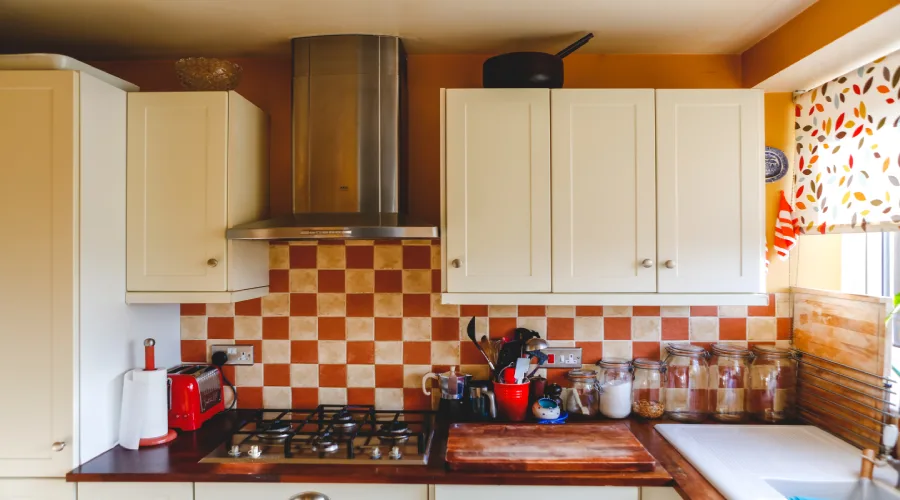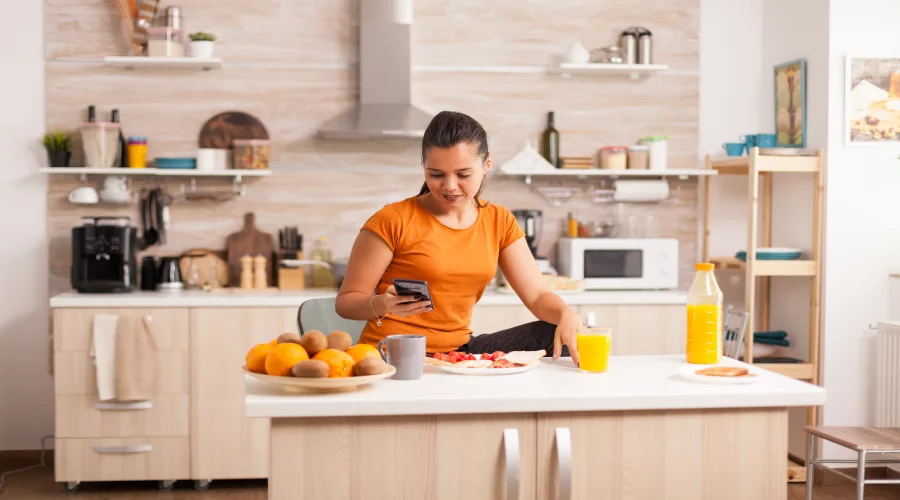Here's a list of the tools and supplies you'll require for your DIY kitchen backsplash:
- Tile
- Spacers
- Mortar or pre-mixed Mastic
- A trowel with a notched edge that matches the size of your tile
- Tile cutter Wet saw, tile cutter or Nippers
- Water and a bucket
- Protective glasses, gloves and safety goggles
- A chisel and hammer for the Masonry (if taking off old tile)
- Scraper
- Spackle
- Sandpaper
- Carpenter's pencil
- Level
- Rags
- Tape for painting
- Drop cloths, or heavy-duty builder's paper
- Grout and grout can float
- Sponges
- Caulk gun and caulk
- Mixing arm and drill
- Mallet made of rubber
- Tape measures
- Utility knife
- Outlet extenders
- Screwdriver
- Create Work Space
Take away cookware, appliances, and other kitchen appliances off your counters. If you're tiled behind the stove then move it off from your walls.
Turn off the power to all light switches or electrical outlets in your workplace. Utilize a screwdriver for removing the covers.
Make sure to cover all countertops with drop cloths or builders' paper, held in place by painter's tape. Make sure you remove the tape from the cabinets' undersides to safeguard them.

Take Old Tiles Off And Wash Wall
When install the backsplash of a ceramic tile requires an even, smooth area to create a smooth surface to work on.
If you're replacing tile Start by scraping the tiles to get rid of any old grout. Be sure to wear safety gear and use tools to take off your old tiles. Do not make use of excessive force. You don't want to break through the wall. With a full kitchen remodel, the sky is the limit. You have the option to rearrange your kitchen layout, add new appliances, boost your storage space and redesign the look and feel of your kitchen. and by taking the service of Kitchen Renovation Los Angeles You'll gain new functionality in your kitchen, from workspace organization to entertainment. Cover the leftover tile adhesive using the help of a citrus-based adhesive remover. It is available in the majority of hardware stores. After the remover is in place then use a scraper to remove the loose material. You may need to employ a hammer and chisel to get rid of large fragments of mortar.
Fill any holes with plaster and then lightly sand them to smooth. Cleanse the walls using moderate soap and water, and then allow them to dry. Make use of a degreaser for cleaning any stubborn grease or oil stain.
If you're planning to tile walls that have been painted, scrub it with tri-sodium phosphate and lightly sand the surface.
With an abundance of cheap tiles on the market as well as an abundance of DIY kitchen backsplash tutorials on Youtube, one would assume that it's simple to set up your kitchen's backsplash. But even though it appears simple doesn't mean that there aren't any possibilities that you'll be doing it wrong.
Plan The Tile Layout
Take a look at the area with the potential to tile. It is suggested to use a pencil to mark the beginning and ending points of your backsplash. it will give you an idea of the location to begin placing the tiles.
The next step is the most difficult. If you've tiled your floors previously or seen others do it, you'll be aware that experts also lay their tiles onto the floors in order to figure out the layout before placing the tiles. Since you cannot make the same thing happen for wall tile, the most effective option is you cut out a bit of material or plastic sheet with identical dimensions to the wall space that needs to be tile. Utilize tile spacers to avoid any mistakes in measurements.
Then lay the cut-out onto the ground, and then place your tiles over top to see how they will look. Based on the style you are thinking of it is possible to experiment with different sizes and colors until you have an ultimate decision.
Also, use a measure to ensure that your kitchen countertops are straight. If they're not, you'll need to cut the tiles in order to be positioned. Since wall tiles tend to be thinner and lighter it is possible to borrow an angle mill from a nearby hardware retailer to complete the task.
Install A Tile Backsplash
If you plan to apply a peel-and-stick backsplash, you'll need to stick the mat to the wall after measuring it and cutting it according to the measurements. But, In Kitchen Remodeling, if you're installing ceramic or porcelain tiles in the kitchen backsplash, then you'll require a thin-set mortar for installation.
Thin-set mortar made up of cement-based and water aids in the adhesion of tiles to the floor that they are placed on, whether the floor or wall. Mix the paste according to the instructions of the manufacturer and begin putting it on the wall using the trowel in smaller sections because it will dry very quickly. Mix it using a trowel that is notched before pressing the first tile onto the wall. Utilize a float made of rubber to press it into. Be sure you use tiles spacers when you go through the process again and then install additional tiles. Get rid of any extra mortar around the edges, as when it's set, it'll be difficult to remove.
You might be thinking about how to put backsplashes around outlets. It's true that it can be complicated. The best method to tackle this issue is cutting the tiles that are set around the outlet in order to ensure it's placed correctly within the center.
Ideally, allow the mortar to dry for about 24 to 30 hours.

Follow The Instructions
Similar to making a recipe, prior to you beginning the project, you should study the directions thoroughly and keep all your items in your kitchen. This will help you ensure that from beginning to end you're working effectively and in the right sequence. Whatever backsplash material you decide to use it is important to follow the correct instructions for installation to ensure a water seal. It is also important to keep track of drying times and then apply the appropriate sealants.
Overspending.
You might be enticed by the most expensive slab of marble at the showroom, but be sure to keep your budget at bay The backsplash isn't the place you should spend your entire kitchen renovation budget. The backsplashes and countertops comprise around 15 percent of the cost of a kitchen's renovation (cabinetry is roughly 48 %). It's acceptable to make your backsplash look elegant and stylish, simply look around for deals, and clearance items or opt for an old-fashioned style that's guaranteed to remain timeless and will not be devalued over the years.
Laminate:
Are you looking for a cost-effective alternative to tile backsplash? Laminate is an excellent kitchen backsplash option for those on a tight budget.
Price:
On average, you should expect to pay between $3 and $11 for each sq ft of laminate. It's fairly easy to work with as well.
Wallpaper:
In reality, wallpaper is an excellent alternative to tile backsplashes for those who lack the art of DIY or don't feel certain about the durability of tiles. It's also an easy method of adding some color to a dull kitchen, especially in the event that you're renting.
Cut Tiles When Required
If you are near the light or outlet, then you'll have to cut some pieces. When installing ceramic tiles there are several cutting options, which vary in ease of use, the quality of cut, and cost. Think about renting tools from your local hardware shop to cut down on your backsplash costs.
Complete Your Kitchen Remodeling Without Breaking the Bank
After you've put up your kitchen backsplash with the ease of an expert, you may notice a few other places needing a little sprucing up. Take a look at our beginner's guide to remodeling your Kitchen on a Shoestring Budget to get some ideas that are cost-effective. Make sure to provide your kitchen with a routine deep cleaning to keep it neat and clean.
